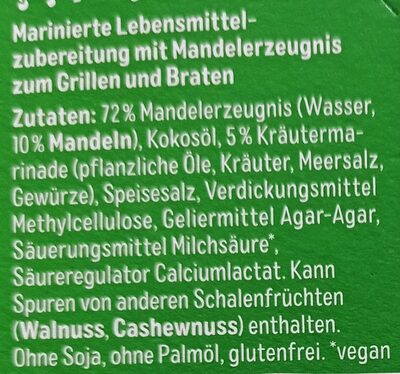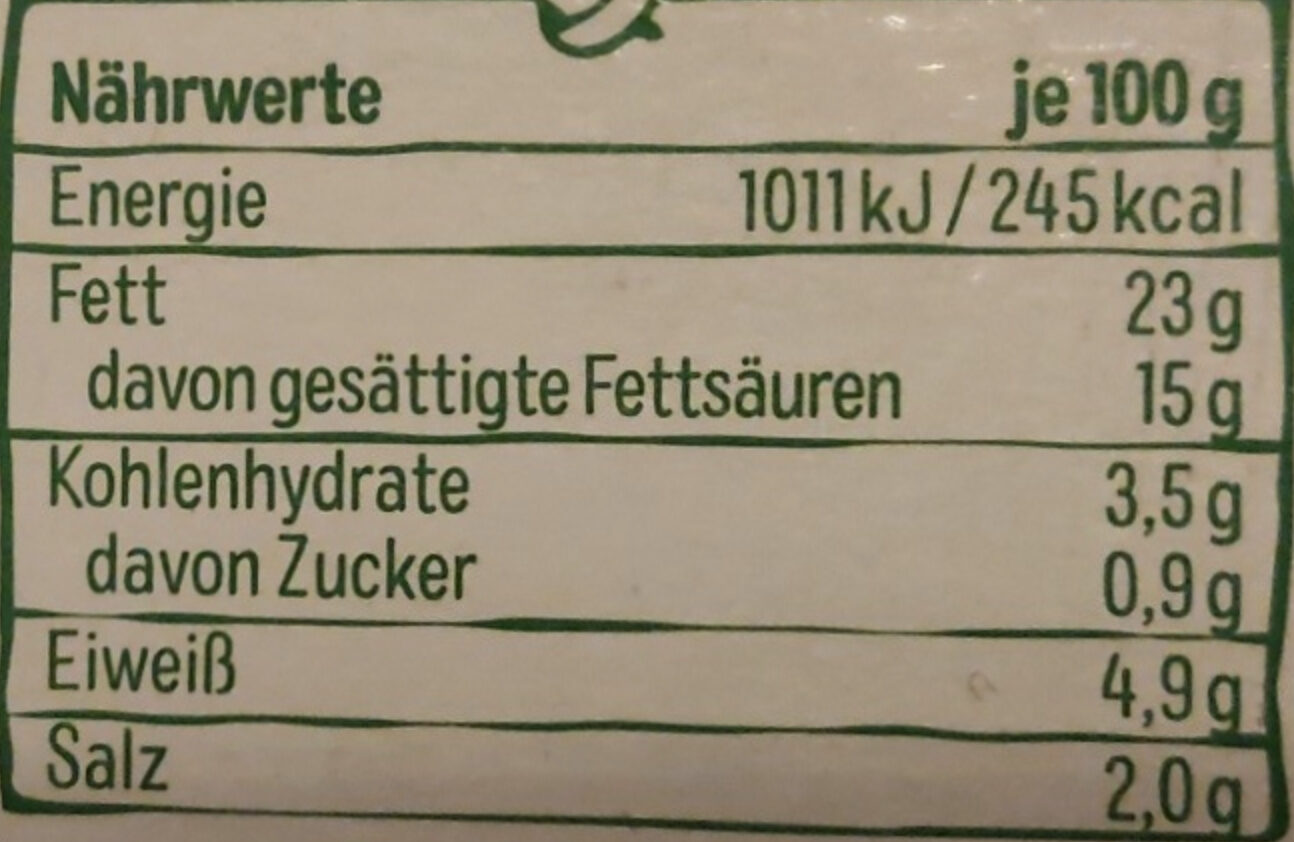Grill & Pfannen Genuss - Simply V - 150 g
This product page is not complete. You can help to complete it by editing it and adding more data from the photos we have, or by taking more photos using the app for Android or iPhone/iPad. Thank you!
×
Barcode: 4260444961367 (EAN / EAN-13)
Quantity: 150 g
Brands: Simply V
Categories: Plant-based foods and beverages, Plant-based foods, Dairy substitutes, Cheese substitutes, de:Veganer Käse
Labels, certifications, awards:
No gluten, Vegetarian, Vegan, The Vegan Society
Manufacturing or processing places: Oberreute
Stores: REWE
Countries where sold: Germany
Matching with your preferences
Environment
Packaging
Transportation
Report a problem
Data sources
Product added on by heuwerk
Last edit of product page on by roboto-app.
Product page also edited by kiliweb, moon-rabbit, openfoodfacts-contributors, segundo, yuka.sY2b0xO6T85zoF3NwEKvlhxDbYrvjmjgDzrTg0K6mPPUCpDqavJ84ZL9C6s.










